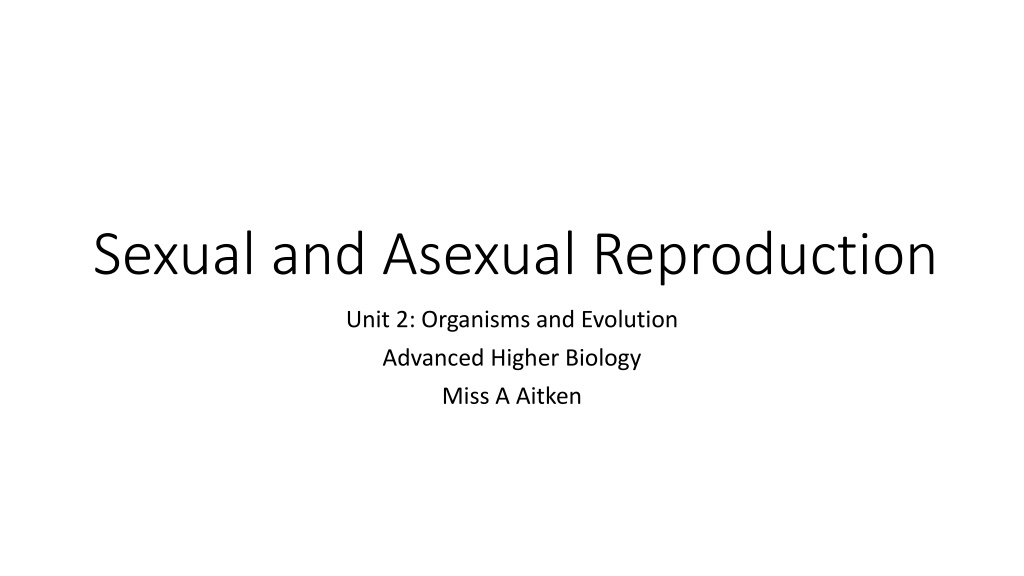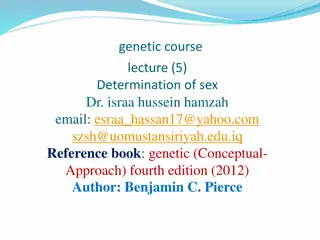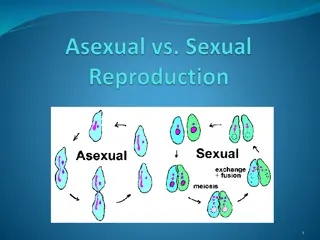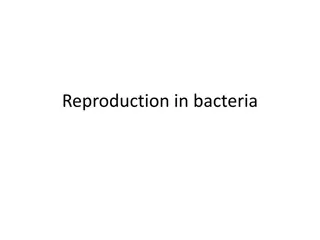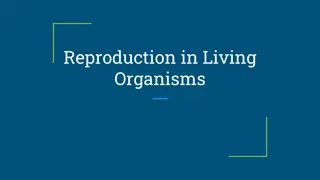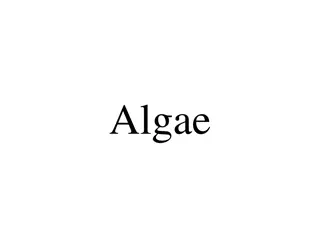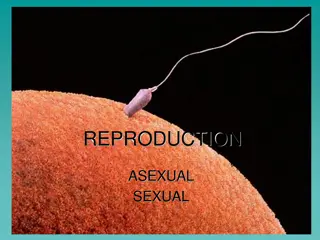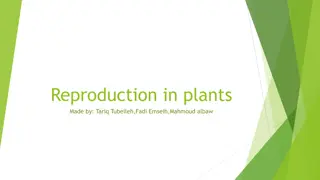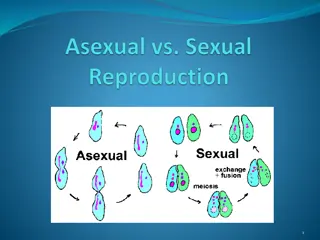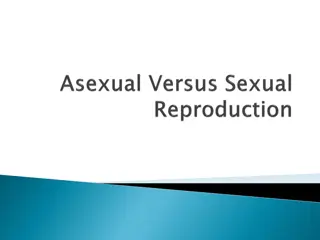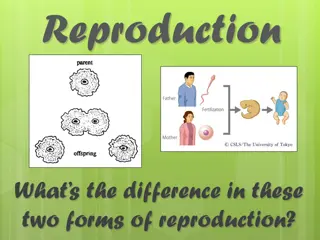Understanding Reproduction: Sexual vs Asexual and the Paradox of Sex
Explore the benefits and drawbacks of sexual and asexual reproduction in organisms, why both forms exist, and the paradox of sex. While asexual reproduction offers efficiency and simplicity, sexual reproduction introduces genetic diversity and complexity. Discover how different species, including prokaryotes, plants, and animals, utilize these reproductive strategies to adapt to their environments.
Download Presentation

Please find below an Image/Link to download the presentation.
The content on the website is provided AS IS for your information and personal use only. It may not be sold, licensed, or shared on other websites without obtaining consent from the author. Download presentation by click this link. If you encounter any issues during the download, it is possible that the publisher has removed the file from their server.
E N D
Presentation Transcript
Sexual and Asexual Reproduction Unit 2: Organisms and Evolution Advanced Higher Biology Miss A Aitken
Costs and Benefits Two forms of reproduction: Sexual Reproduction Asexual Reproduction Why do both forms exist? They must exist because neither one is perfect for all situations. If it was perfect, only one would exist.
Asexual Reproduction vs Sexual Reproduction ASEXUAL Metabolic costs are lower less energy required Many identical offspring suited to the environment of the parent (clones) Simple Rapid SEXUAL Lots of energy required as a special type of cell division needed (meiosis) Only half of the population can actually produce offspring Much slower than asexual reproduction
The Paradox of Sex Why is sexual reproduction the most common way of reproducing? Main problem why do males exist? 1. They are unable to produce offspring themselves so only half of the population can actually have offspring reducing effectiveness of population by 50% 2. Combining genetic material from mother and father disrupts successful genomes as only half of each s genetic info is passed to the offspring.
Asexual Reproduction Useful for Some Asexual reproduction in prokaryotes Bacteria and archaea (other single celled organisms) reproduce by asexual reproduction they divide and make more of themselves. They can also carry out Horizontal Gene Transfer
Asexual Reproduction Useful for Some Asexual reproduction in plants Many plants use asexual reproduction Flowering plants use sexual reproduction but a wide range of asexual strategies have evolved as well including: bulbs, corms, tubers, runners and rhizomes. Fungi and non-flowering plants sometimes use spores to disperse offspring.
Asexual Reproduction Useful for Some Asexual reproduction in animals Extremely uncommon Parthenogenesis is the name given to asexual reproduction in animals (literally means virgin creation ) Females produce offspring without the requirement for a male. The offspring are all female and are clones of the mother. All animals which carry out parthenogenesis can also carry out sexual reproduction to produce males/variation. More commonly found in cooler climates with low parasite density or diversity.
Conditions that Favour Asexual Reproduction Producing identical offspring can be useful in a narrow and stable niche. Aphids use asexual reproduction to quickly exploit a new food source Useful for recolonising disturbed habitats for example, buttercup plants use asexual reproduction to spread over an area of clear soil.
